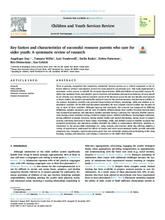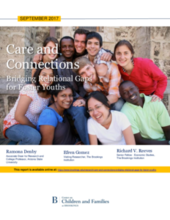Displaying 101 - 110 of 230
This study implemented a systematic review process to identify the personal characteristics, skills and abilities of successful resource families that maximize foster and adoptive parent retention and maximize placement permanency of teens placed in out of home care.
The purpose of this study is (1) to examine trends in placement use and placement stability since the reform and (2) to document the current frequency of each type of placement setting, the cumulative time in care before the exit to permanency, and the sustainability of the permanency outcome.
This article compares blank care order application templates used in four countries (England, Finland, Norway, and USA (California)), treating them as a vital part of the ‘institutional scripts’ that shape practice, and embody state principles of child protection.
This article examines whether and how felt caregiver burden influences the reported propensity of caregivers to want to adopt the children in their care.
This bulletin offers information to help US child welfare agency managers by providing strategies for achieving reunification and preventing reentry and includes examples of promising practices being implemented by States and localities.
This report explores the challenges of implementing and evaluating relationship-based interventions for young people with experience in the U.S. foster care system and presents recommendations for both practitioners and researchers for successful implementation and evaluation in the future.
This study from the Special Issue on Kinship Care of the Child Welfare Journal examines the characteristics of children and their caregivers, the extent of children’s prior involvement in the child welfare system and the factors associated with placement instability in informal kinship care.
This study examined the way adoption of children from out-of-home care is understood by the professionals involved in making decisions about their permanent care placements in Victoria, Australia.
This paper utilizes a harm-reduction framework to present best practices for improving residential care and reducing the negative effects residential care can have on children's development.
This study from the Special Issue on Kinship Care of the Child Welfare Journal examined if kinship navigation services can improve family needs, caregiver self-efficacy and placement stability of children in the care of their grandparents or other relatives.



